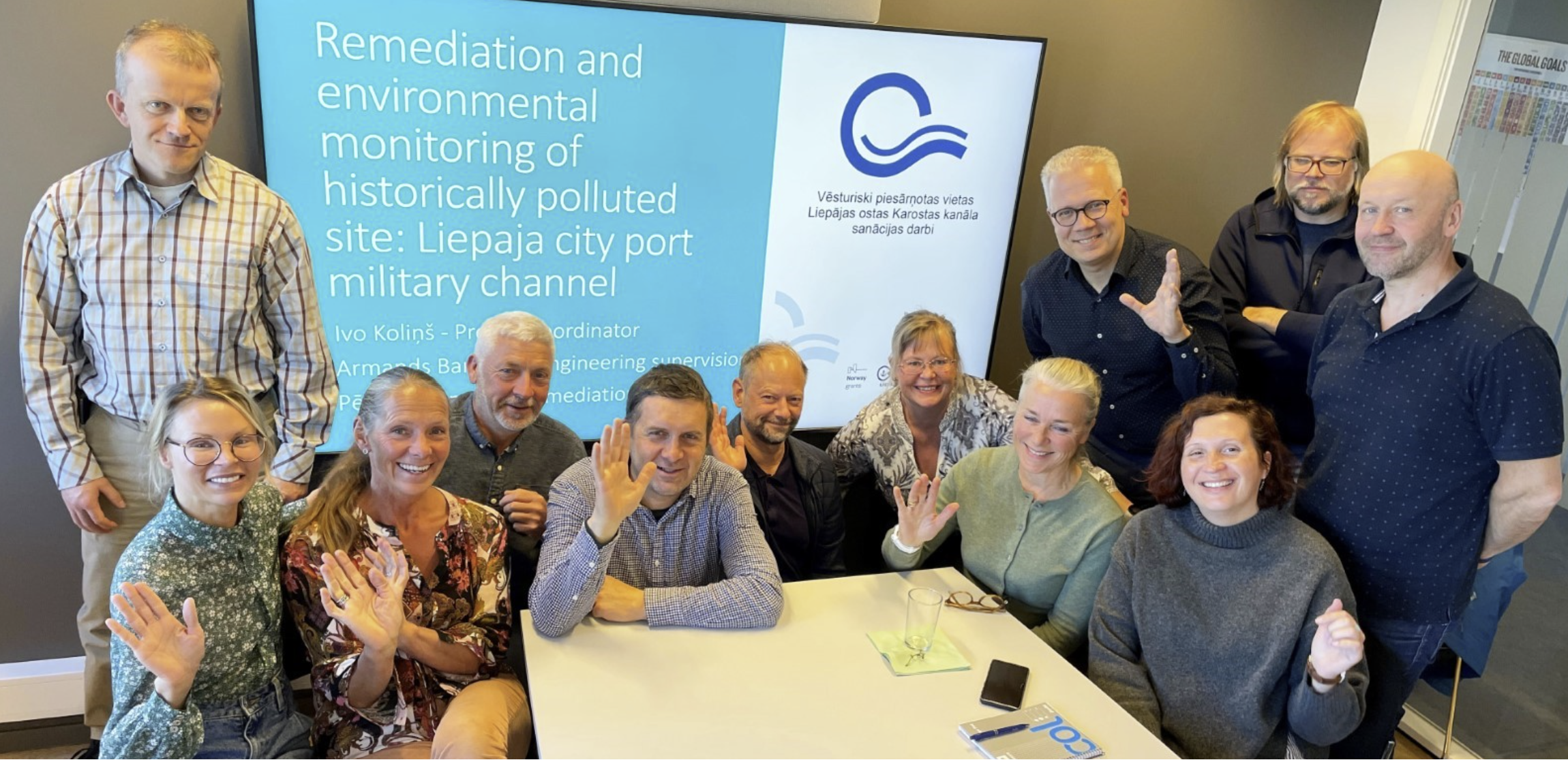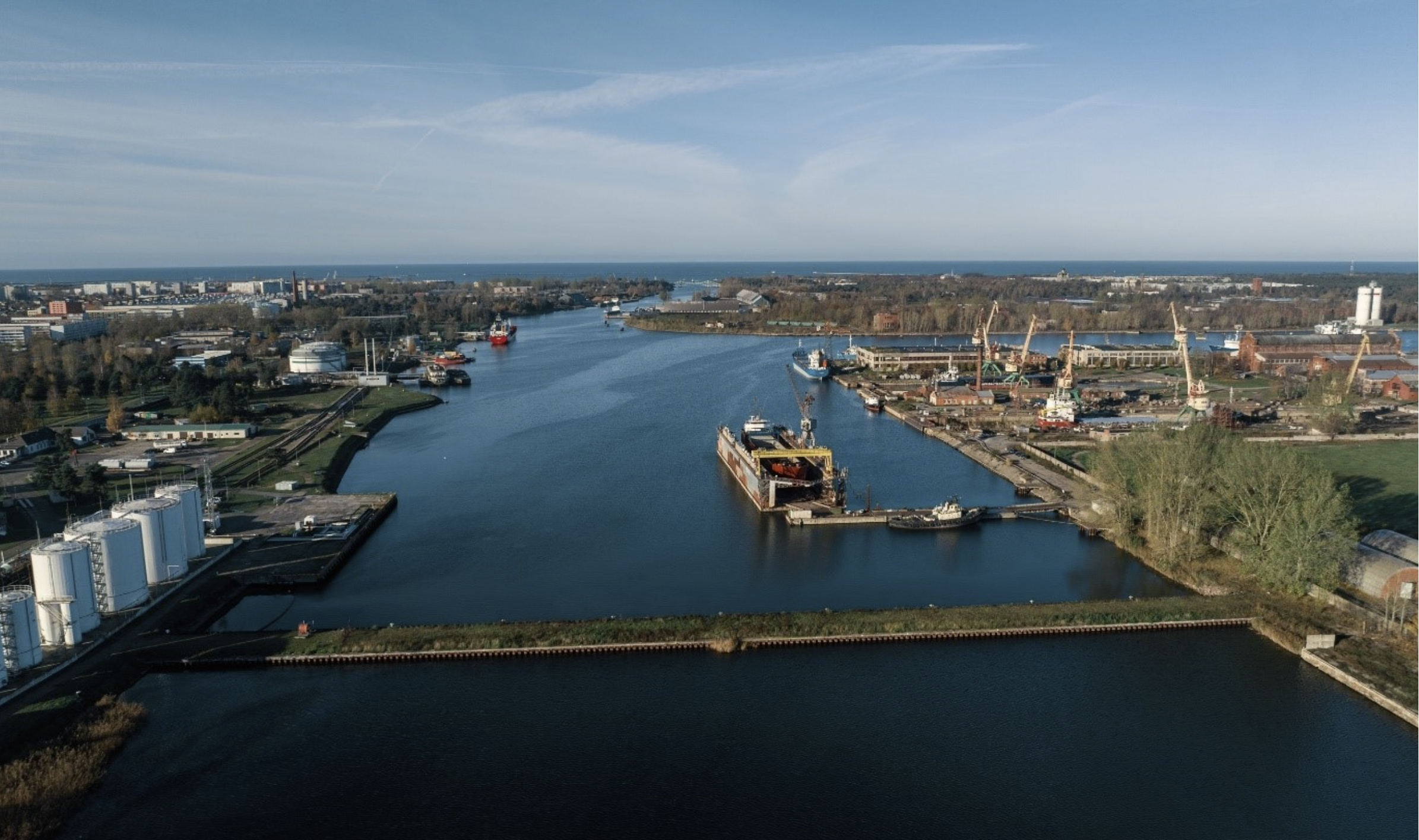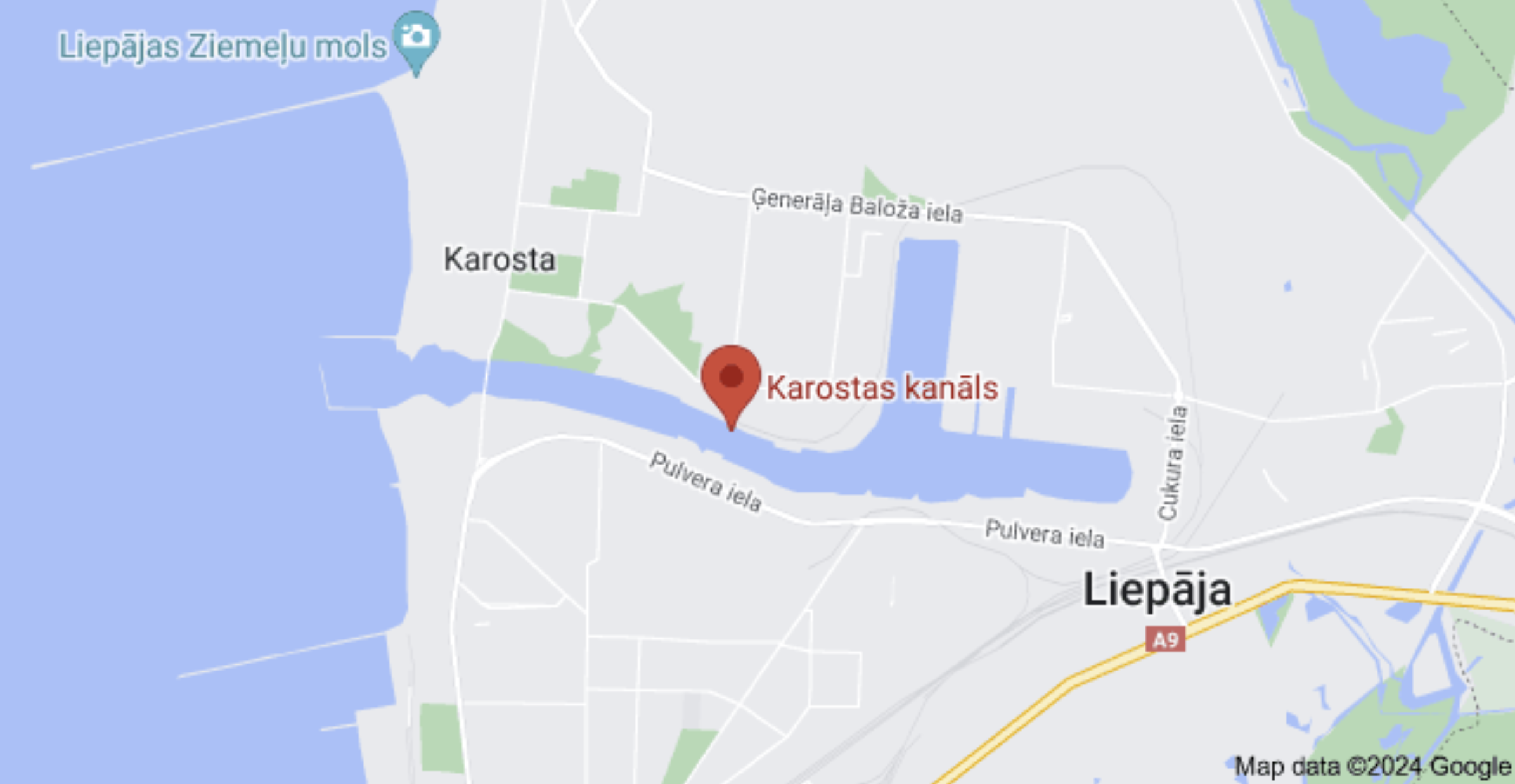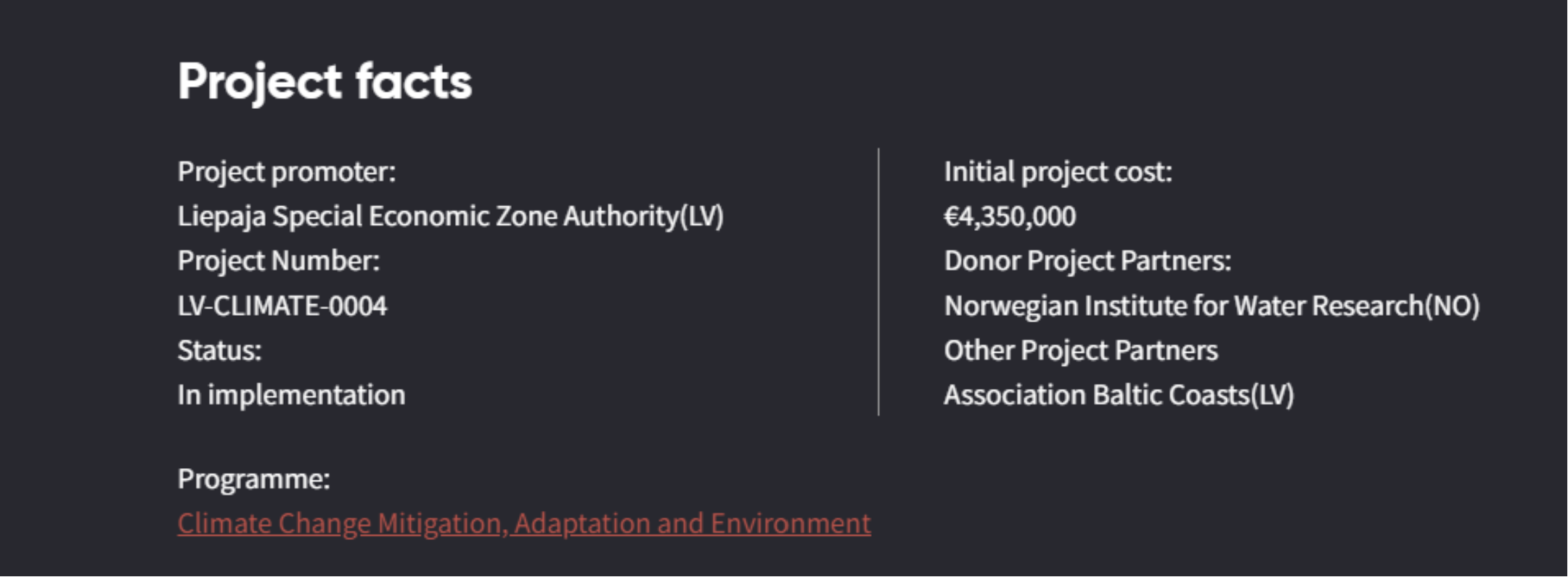Karosta canal is an artificial canal, constructed at the end of 19th century for the needs of Russian imperial navy fleet. Starting from second half of 20th century for 50 years this territory was a closed zone, used by the military navy force of Union of Soviet Socialistic Republics (hereinafter USSR), which were active in Latvia until their demobilisation in 1994.
During this period the canal was exploited without taking into account the possible negative impact on the surrounding environment. As a result of the improper administration, the toxic pollution that got into the environment (oil products and heavy metals) have accumulated in sediments of canal seabed, causing essential ecological threat to the Baltic Sea environment quality.
“Palpable results”
After the collapse of the USSR Liepaja SEZ Authority has been the manager of historically polluted territory.
A persistent and purposeful environmental rehabilitation project, where research work has been underway since the early 1990s, has been chipping away at the pollution that plagues the Karosta canal.

The first round of Karosta Canal clean-up was launched as early as 2014. Spearheaded by the Liepaja Special Economic Zone (SEZ) Authority and with funding from the Norway Grants, the third round of the Karosta Canal environmental rehabilitation project, is currently closing.
And the results are palpable, according to Ivo Koliņš, the project manager of Liepaja SEZ. But the clean-up has been a painstaking process.
“146 thousand cubic meters of contaminated materials containing a total of around 298 tonnes of various hazardous substances have been removed, including petroleum products, heavy metals, and so on. A total of about 72 hectares have been polluted. We’re talking about some 40% here,” Koliņš says.
These figures represent a significant leap in the right direction, but as just over half of the Karosta Canal remains uncleaned, the main focus in this round of clean-up has been on the part of the canal where economic activity is carried out, Koliņš explains.

Transfer of knowledge
The project is implemented together with the Latvian partner, the association Baltijas Krasti, and the Norwegian partner, the Norwegian Water Research Institute. The experience of the partners is essential to achieve the project’s objectives, as knowledge transfer is necessary for the success of the project and public awareness activities are needed on the effects of climate change on historically polluted sites and their interaction with human health and marine ecology.
“With our expertise and experience from similar work in Norway, we have helped the Latvian authorities on the way to the Karosta Canal achieving a good chemical and ecological condition, so that the canal will eventually meet the water framework directive”, says Senior Research Scientist PhD, Sissel Brit Ranneklev, project manager at the Norwegian Water Research Institute.

The project will benefit the whole of society by promoting the objectives and actions of the Helsinki Commission (HELCOM) Baltic Sea Action Plan - restoring the good ecological status of the Baltic Sea – ensuring marine ecological diversity and dynamism, cleanliness, health and productivity in marine environments, the environment is used sustainably, preserving the potential for the use of marine waters for this and future generations.
"As DPP for this programme the Norwegian Environment Agency get valuable insight in environmental challenges in Latvia, like the Karosta Canal Rehabilitation project. Through good cooperation with the Latvian Ministry of Environmental Protection and Regional Development the programme also gives good opportunities for other bilateral activities and information exchange", says André Kammerud, Head of Section for the High North and Bilateral Relations.
Economic progress
The mission is however far from accomplished. Over half of the Karosta Canal still remains uncleaned. The focus in this round of clean-up on the areas with potential for economic activity, is pivotal for the economic progress of the region.
The path to a fully rehabilitated Karosta Canal is a long one, but the commitment to the cause remains unwavering. And as each phase of the clean-up concludes, the time when Karosta Canal is fully rehabilitated, becomes that much closer.
The total cost of the project was just over 4,7 million euros, of which around 72% was financed by the Norway Grants, the rest came from the state budget and from Liepaja Special Economic Zone (SEZ) Authority.

The Karosta Canal Rehabilitation project is part of the Latvian Climate programme. The activities in this programme have a strong sustainability component. Overall, the programme supports and informs policy development and implementation of the day-to-day work in state institutions, municipalities, research institutions and the private sector.
The programme also updates information on soil data and indicators which will be used to develop better targeted land-use planning, sustainable land resource management solutions, and more accurate greenhouse gas emissions calculation. Warning systems is used to reduce risks of adverse climate and to improve safety of people. By remediation of polluted sites, the programme is expected to have long-term impact in Latvia.
By improving climate change policies and implement changes at all levels, Latvia aims to improve their score on the EU Adaptation Preparedness Scoreboard from 60% today to a score of 80% by the end of the programme. Further, the programme’s aim is to increase the capacity to develop and apply climate change policies at 16 public institutions.
Find out more about the project here.

